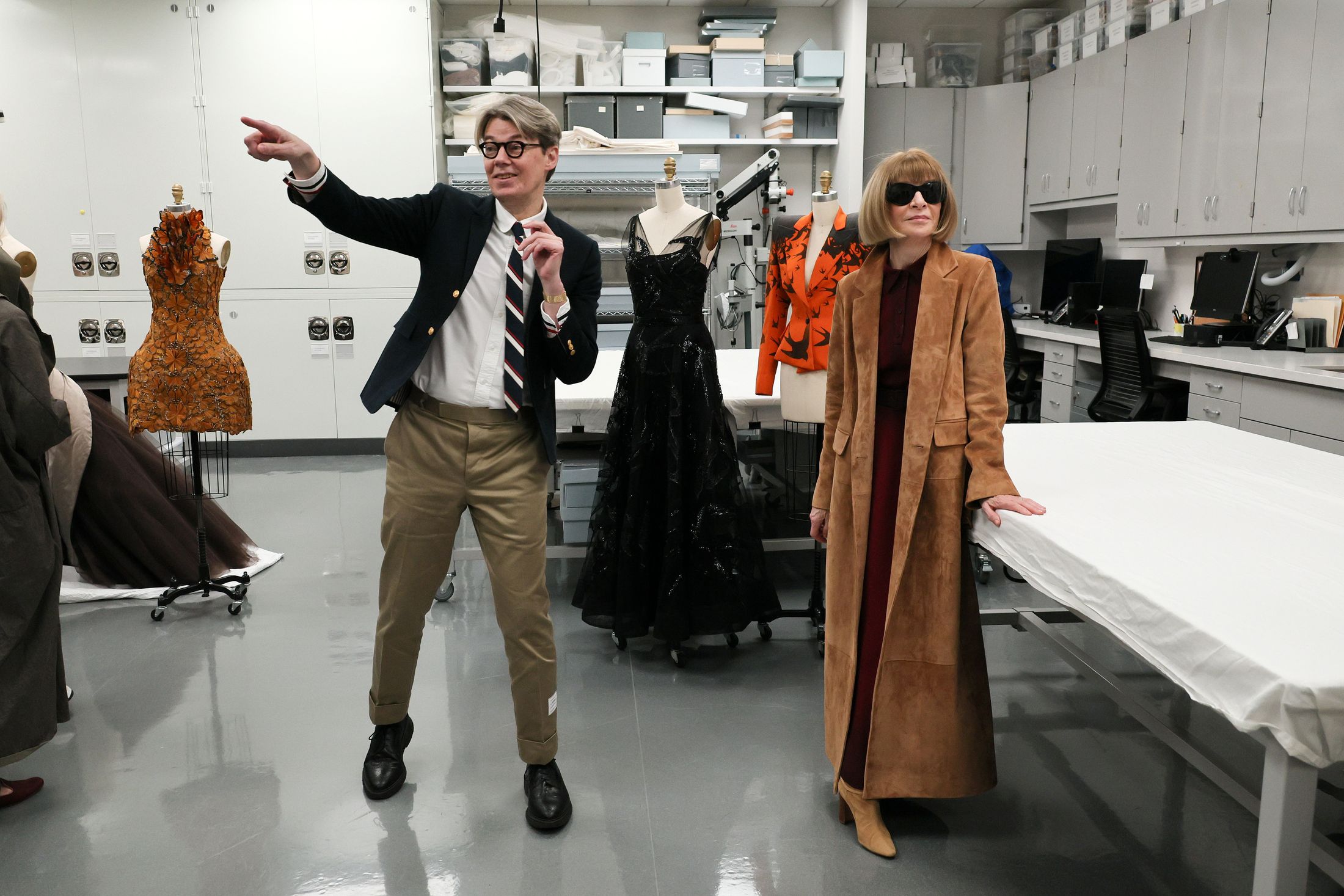


If you’ve been enjoying these curated article summaries that dive into cultural, creative, and technological currents, you may find the discussions and analyses on our Substack page worthwhile as well. There, I explore themes and ideas that often intersect with the subjects covered in the articles I come across during my curation process.
While this curation simply aims to surface compelling pieces, our Substack writings delve deeper into topics that have piqued our curiosity over time. From examining the manifestation of language shaping our reality to unpacking philosophical undercurrents in society, our Substack serves as an outlet to unpack our perspectives on the notable trends and undercurrents reflected in these curated readings.
So if any of the articles here have stoked your intellectual interests, I invite you to carry that engagement over to our Substack, where we discuss related matters in more depth. Consider it an extension of the curation – a space to further engage with the fascinating ideas these pieces have surfaced.
On a freezing day in December 2021, I arrived in Madison, Wisconsin, to visit Simon Gilroy’s lab. In one room of the lab sat a flat of young tobacco and Arabidopsis plants, each imbued with fluorescent proteins derived from jellyfish.
Researchers led me into a small microscope room. One of them turned off the lights, and another handed me a pair of tweezers that had been dipped in a solution of glutamate—one of the most important neurotransmitters in our brains and, research has recently found, one that boosts plants’ signals too. “Be sure to cross the midrib,” Jessica Cisneros Fernandez, then a molecular biologist on Gilroy’s team, told me. She pointed to the thick vein running down the middle of a tiny leaf. This vein is the plant’s information superhighway. Injure the vein, and the pulse will move all over the plant in a wave. I pinched hard.
On a screen attached to the microscope, I watched the plant light up, its veins blazing like a neon sign. As the green glow moved from the wound site outward in a fluorescent ripple, I was reminded of the branching pattern of human nerves. The plant was becoming aware, in its own way, of my touch.
But what exactly does it mean for a plant to be aware ? Consciousness was once seen as belonging solely to humans and a short list of nonhuman animals that clearly act with intention. Yet seemingly everywhere researchers look, they are finding that there is more to the inner lives of animals than we ever thought possible. Scientists now talk regularly about animal cognition; they study the behaviors of individual animals, and occasionally ascribe personalities to them.
Some scientists now posit that plants should likewise be considered intelligent. Plants have been found to show sensitivity to sound, store information to be accessed later, and communicate among their kind—and even, in a sense, with particular animals. We determine intelligence in ourselves and certain other species through inference—by observing how an organism behaves, not by looking for a psychological sign. If plants can do things that we consider indications of intelligence in animals, this camp of botanists argues, then why shouldn’t we use the language of intelligence to describe them too?
From the July/August 2021 issue: A better way to look at trees
It’s a daring question, currently being debated in labs and academic journals. Not so long ago, treading even lightly in this domain could upend a scientist’s career. And plenty of botanists still think that applying concepts such as consciousness to plants does a disservice to their essential plantness. Yet even many of these scientists are awed by what we are learning about plants’ capabilities.
A single book nearly snuffed out the field of plant-behavior research for good. The Secret Life of Plants, published in 1973, was as popular as it was irresponsible; though it included real science, it also featured wildly unscientific projection. One chapter suggested that plants could feel and hear—and that they preferred Beethoven to rock and roll. Another suggested that a plant could respond to malevolent thoughts.
Many scientists tried to reproduce the most tantalizing “research” presented in The Secret Life of Plants, to no avail. According to several researchers I spoke with, this caused the twin gatekeepers of science-funding boards and peer-review boards to become skittish about plant-behavior studies. Proposals with so much as a whiff of inquiry into the subject were turned down. Pioneers in the field changed course or left the sciences altogether.
Read the rest of this article at: The Atlantic
LOS BANOS, Calif. — Robert Zavala was fresh out of the Marines and looking to escape dead-end work at a poultry plant in the early 1990s when his old baseball coach — now the head of a local water district — swooped to the rescue with a job offer.
Zavala was grateful for the job, which eventually paid more than $150,000 a year and included perks such as free housing and a new truck. Grateful enough, he later testified in state court, that when he learned the public agency he worked for was stealing water from the federal government he kept his mouth shut. For years.
And then one day in 2016, FBI agents showed up at his house.
“They told me they were investigating my boss for water theft, and they wanted to know if I wanted to go to federal prison with him,” Zavala said in his testimony.
Zavala became one of many employees the FBI would interview about goings-on in the Panoche Water District, a public agency formed in 1951 that supplies irrigation for 38,000 acres of farmland in Fresno and Merced counties on the parched western side of the San Joaquin Valley.
The stories were “unimaginable,” one Panoche official later testified in the same civil case. Public funds were allegedly used to pay for housing and pickup trucks for employees, along with slot machines, illicit home remodels, tickets to Katy Perry concerts, even an employee’s court-ordered restitution for an assault charge, according to testimony in the civil case, court filings in a state criminal case and a related state audit.
Not to mention the alleged theft of 130,000 acre feet of water — enough to supply a small city for several years.
Federal prosecutors would eventually bring felony charges against Zavala’s old boss, the former general manager of the Panoche Water District, accusing him of one of the most audacious and long-running water heists in California history.
In a state with prolonged bouts of drought and unquenching thirst, stolen water is an indelible part of California lore. But this was not Los Angeles’ brazen gambit to take water from the Owens Valley. Or San Francisco’s ploy to flood part of Yosemite National Park for a reservoir. The water grab described in a federal indictment allegedly happened cat burglar-style, siphoned through a secret pipe, often after hours, to avoid detection.
Prosecutors have accused Dennis Falaschi, 77, a gregarious local irrigation official, of masterminding the theft of more than $25 million worth of water out of a federal canal over the course of two decades and selling it to farmers and other local water districts. According to the allegations, proceeds that should have gone to the federal government instead were used to benefit Falaschi, his water district and a small group of co-conspirators, much of it funneled into exorbitant salaries and lavish fringe benefits.
For more than a year, Falaschi maintained his innocence, insisting there had been no theft. Then this spring, his attorneys filed paperwork that said he was prepared to change his plea. Exactly what he will plead guilty to remains unclear: A change-of-plea hearing initially scheduled for April was pushed back at least a month while the two sides continue to wrangle. Attorneys in both camps have declined to discuss their negotiations.
Read the rest of this article at: Los Angeles Times

I suspect Montaigne was being coy when he complained of the “wild and useless weeds” that would encroach on his mind in idleness. It is to those wild shoots that Montaigne owed his genre-defining essais, and thus his lasting influence. Spontaneous growth testifies to fertile ground, which is certainly better than the alternatives. One alternative is a barren mind. Another, seemingly opposed but often one and the same, is the harried or overwhelmed state of those consumed by careerist ambition — which stands for many or most of us.
Montaigne left such pursuits behind in the 1560s, at age 38, when he retired from public office to embark on a life of contemplation, thanks to which we have his published work. In solitude, he gave himself over to the world and his own mind — his “back shop”. He was there for the weeds.
A similar gardening metaphor appears in the Korean-German philosopher Byung-Chul Han’s recent book, Vita Contemplativa. Like Montaigne, Han, the author previously of the bestselling The Burnout Society, has left behind an active life of status and striving to dwell in the inner sanctum of his mind. According to a profile in El Pais, he writes “just three sentences a day”, devoting most of his time to his plants and classical music. His latest book is a paean to contemplative inactivity, which he correctly sees as “not just the absence of activity but a capacity in itself”.
Read the rest of this article at: UnHerd
Nilay Patel, the editor-in-chief of the digital technology publication The Verge, has lately taken to describing theverge.com as “the last Web site on earth.” It’s kind of a joke—there are, of course, tons of Web sites still in existence, including the likes of Facebook.com—but also kind of not a joke. For much of the past decade, publications’ home pages were rarely the focus of attention; journalistic outlets relied on social media to distribute what they published. The Verge is an outlier in that it invested heavily in its home page when it was out of fashion to do so. In 2022, it launched a dramatic redesign that was meant to make its site a more dynamic destination; it included a “Storystream” of short posts and visual highlights, similar to tweets, that provide dozens of updates a day in real time. The new Verge looked less like a traditional publication and more like a social-network feed, which initially struck many industry observers as ludicrous. Why bother trying to do what the social platforms already do better? The home page was dead. TikTok was the future.
“The immediate reaction was ‘This is doomed to fail, no one will ever go to a home page again,’ ” Patel recalled. Then Twitter imploded under the leadership of Elon Musk, and all of the major social platforms pivoted away from news distribution. In the end, The Verge’s redesign worked. According to the company, the number of “loyal users” (defined as those who have five or more sessions on the site in a calendar month) increased by forty-seven per cent in the course of 2023. Though it is not a general-interest title, The Verge continues to be the most visited single site under the umbrella of Vox Media, its parent company. One could argue that its makeover, which has now become a subject of admiring chatter among media executives and the editors who work for them, heralds the revenge of the home page.
The major social platforms operated for a long time like digital big-box stores for media content, offering a little of everything all at once. Twitter, especially, served as a one-stop shop for news and entertainment among a certain kind of very online user. In the twenty-tens, the conventional wisdom was that content was best distributed to consumers by social platforms through algorithmically personalized recommendations. You read whatever news surfaced in your Facebook or Twitter feeds. News articles circulated as individual URLs, floating in the ether of social-media feeds, divorced from their original publishers. With rare exceptions, home pages were reduced to the role of brand billboards; you might check them out in passing, but they weren’t where the action lay.
Now digital-distribution infrastructure is crumbling, having become both ineffective for publishers and alienating for users. Social networks, already lackluster sources for news, are overwhelmed by misinformation and content generated by artificial intelligence. A.I.-driven search threatens to upend how articles get traffic from Google. Text-based media have given way to short-form videos of talking heads hosted on TikTok, Instagram, or YouTube. If that’s not how you prefer to take in information, you’re out of luck. Surrounded by dreck, the digital citizen is discovering that the best way to find what she used to get from social platforms is to type a URL into a browser bar and visit an individual site. Many of those sites, meanwhile, have worked hard to make themselves feel a bit more like social media, with constant updates, grabby visual stimuli, and a sense of social interaction. Patel told me, “What we needed to do was steal moves from the platforms.”
Read the rest of this article at: The New Yorker
When the annual parade of celebrities ascends the steps at the Metropolitan Museum of Art on Monday night to mark the opening of “Sleeping Beauties: Reawakening Fashion,” guests will have no indication that the elaborate exhibition they are about to see is a last-minute backup plan. As recently as summer 2023, head curator Andrew Bolton and his patron, Vogue’s Anna Wintour, intended instead to stage a show dedicated to the work of one of their favorite designers — John Galliano. His career is still marked by a series of drunken antisemitic tirades that led Dior to fire him in 2011. In the years since, with Wintour’s unyielding support, he has sought public forgiveness and returned to fashion, now designing for Maison Margiela. A monographic exhibition at the Met could have been the culmination of a comeback.
But the Costume Institute’s Galliano exhibition is on indefinite pause, according to sources with knowledge of the department’s plans. The Metropolitan Museum’s leadership feared public backlash. Some members of the museum’s board are said to have stepped in to stop the show, too. (A representative for the Met said the museum does not comment on unconfirmed exhibitions. Bolton and Wintour declined to comment for this story.) The unusual intervention points to new and old tensions at fashion’s most prestigious museum department.
In the 2010s, Bolton, a lanky, bookish Brit, perfected the fashion blockbuster exhibition, building on a legacy of innovative high-fashion shows at the Met dating back to Diana Vreeland’s tenure there in the ’70s. Bolton’s lavish, Broadway-theater-level productions became must-see public programming. Long-standing concerns about the department’s close commercial ties seemed obsolete. Art critics paid attention. Each show was heavily advertised by Wintour’s ultra-A-list, invite-only Met Gala benefit dinner at the Temple of Dendur. And each exhibition was supported, through loans and multibillion-dollar donations, by luxury brands eager to have their couture gowns exhibited in the same halls as Dutch Masters and Egyptian Sphinxes.
But in the past five years, the wider landscape changed. In large part thanks to their popularity at the Met, fashion exhibitions are more commonly seen in major institutions, including shows that seek to broaden fashion’s European focus or contend with the thornier elements of designers’ histories. When the Victoria and Albert Museum in London recently staged a retrospective on Gabrielle Chanel, it included documents that revealed the designer collaborated with Nazi officials in the 1940s. At the same time, luxury fashion brands, more powerful and consolidated than ever, now regularly stage and promote brand-friendly shows, with or without the support of a major museum. Dior’s newly renovated flagship store in Paris includes a permanent museum space for its archive. Last month, Dolce & Gabbana celebrated the opening of a retrospective organized by its founding designers in Milan. It too will tour internationally.
Read the rest of this article at: The Cut



